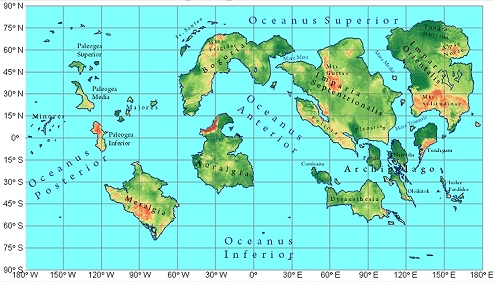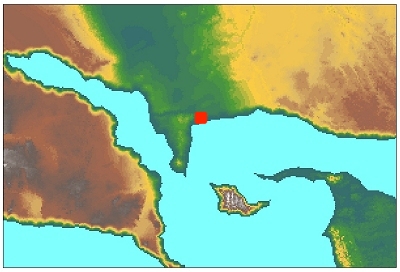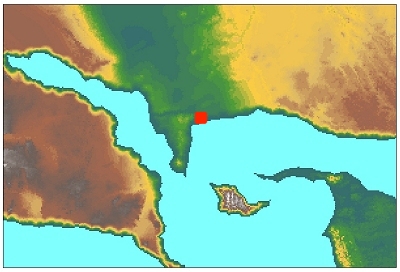


|
Let's start with some comparative data, to provide you with an idea how Furaha compares to Earth. Here two models have been put side by side. As you can see Furaha is the larger of the two: Earth's radius is 6378 km, and Furaha's is 6941 km, or 1.09 times larger than Earth's. Some call Furaha Earth's larger brother, but as a planet it is about 1 Gigayear younger than Earth, so it may with equal right be called Terra's little brother. Its mass is 1.36 times larger than that of Earth, resulting in a surface gravity of 1.15 times the one Terrans are used to. As you'll find in the astronomy section, it's at 1.44 astronomical units from Jua, and its year lasts 1.60 Earth years, divided into 551 Furahan days. |
|
And just for fun here is a rotating globe of Furaha. A thing to remember with the colours shown here is that this is a height map: low lands are darker green, while higher terrain goes from yellows to browns. This may give the impression that all 'green areas' are verdant, but this need to be the case at all! Such areas may in reality be deserts, so their real colour could be sand-like, or they might be coloured a dazzling white, if the ground is snow-covered. To obtain an indication of the terrain's true colours, visit the page on satellite imagery. |

|

|
Here are the two world maps side by side, to the exact same scale (Plate Carrée projection). Furaha's larger radius has the effect that its surface area is 1.29 times bigger than Earths'. While the proportions of land to sea are roughly similar, in Terra's case most of the land is found in the form of the continents as very large land masses along with lots of small islands. There are few intermediate size masses on Earth, but there are on Furaha. It is probably for that reason that no-one on Furaha ever bothered to impose some sort of arbitrary distinction on whether a mass should be called a small continent or a big island, or even to count the number of 'continents'. Oh yes: wisely, the settlers chose the meridian system in such a way that the 180 degree meridian (meaning the left and right edges of the map) did not run through any major landmasses. That line also represents the date line.
The above map (Robinson projection) shows a recent tendency of the inhabitants of Nexus (on the south coast of Imparia Septentrionalis) to use maps with a 90 degree shift so their local area ends up in the middle of the map, bisecting Meralgia. There's no satisfying some people. |
|
When humans came to Furaha, they started naming islands, continents etc. Some of the names were bestowed by the crew of the first exploratory vessel (the good ship Ngonjera) and the later Horizonists honoured those names. As holds for the planets, this may not have been the best of ideas. A lack of linguistic skills is not the explanation, nor is it an excuse. The Horizonists has chosen Novolatino for a common language, and therefore certainly understood some of the fanciful names in Medical Latin chosen by the Ngonjera's doctor. A misguided sense of historical rectitude must have governed their actions. The names on the map shown here are the official ones for some major geographical features. In daily practice, various variants are used, depending on custom and a person's clade (see the section on culture). Equidistant cylindrical projection |

|




|
To do justice to the Furahan Cartographers' Guild a sample of their work is shown. Nor surprisingly, it's the area around Nexus, Furaha's main settlement, and the seat of the Institute. At the top, we see a globe outlining the region of interest, situated in the tropics of Imparia Septentrionalis. Next, a typical false colour height map, in which a progression of colours indicates increasing height. Nexus is situated at the red dot. The Horizonists chose the area for easy access to inland areas, through the lowland to the north, and to other areas over the sea. Should anyone wish to simplify such an image, that would be easy: the second map shows the terrain divided into only a few layers of altitude, each represented as one colour. The contour lines help to determine the shape of the terrain. Finally, 3D maps are perfect for tourist maps. This one shows the shape of the terrain using a tremendous exaggeration of height. In reality, the map spans some 3000 km (on Terra, that would be about the distance from Lisbon to Minsk). The height contours again denote 500 m intervals. The highest peak is some 3000 m tall, here exaggerated some 100 times. Not that there are any tourists on Furaha, but should any appear, the Guild is ready to produce appropriate maps at a moment's notice. |